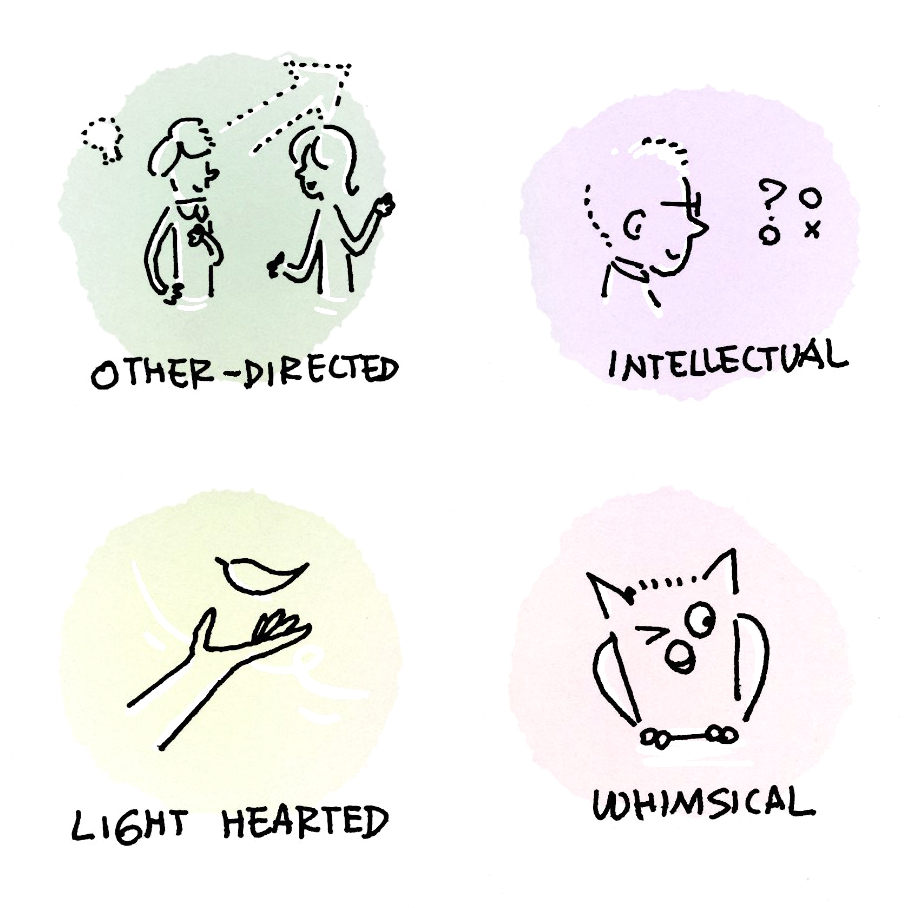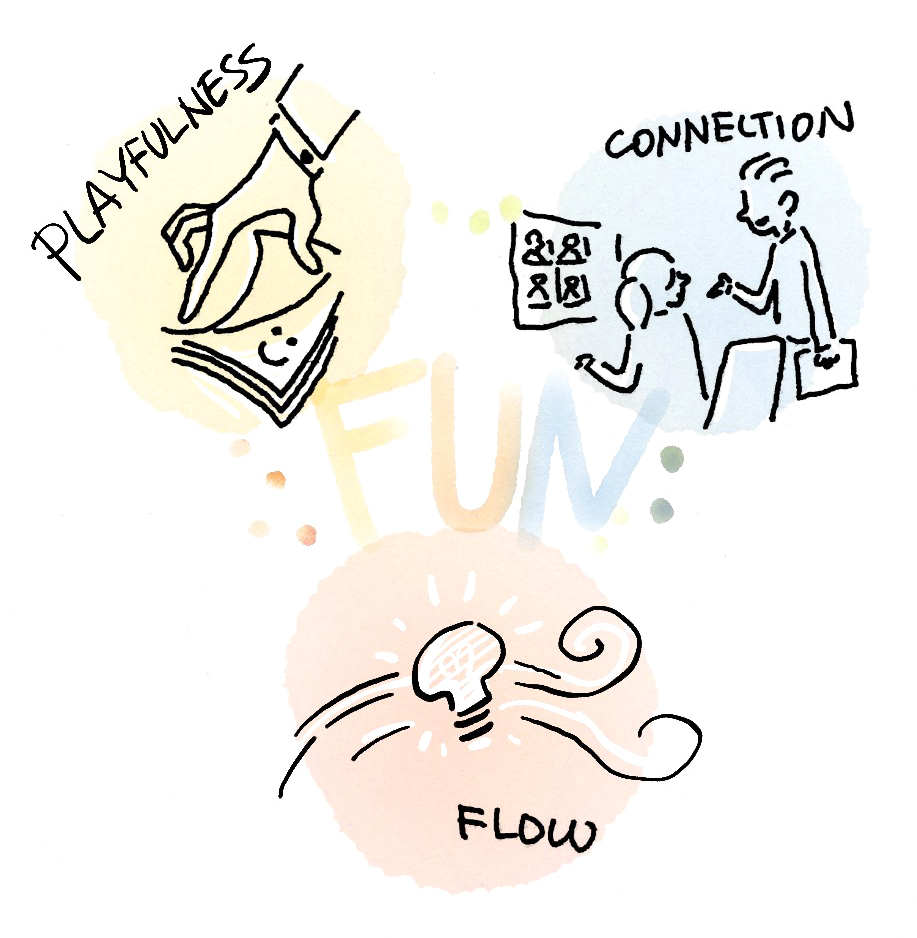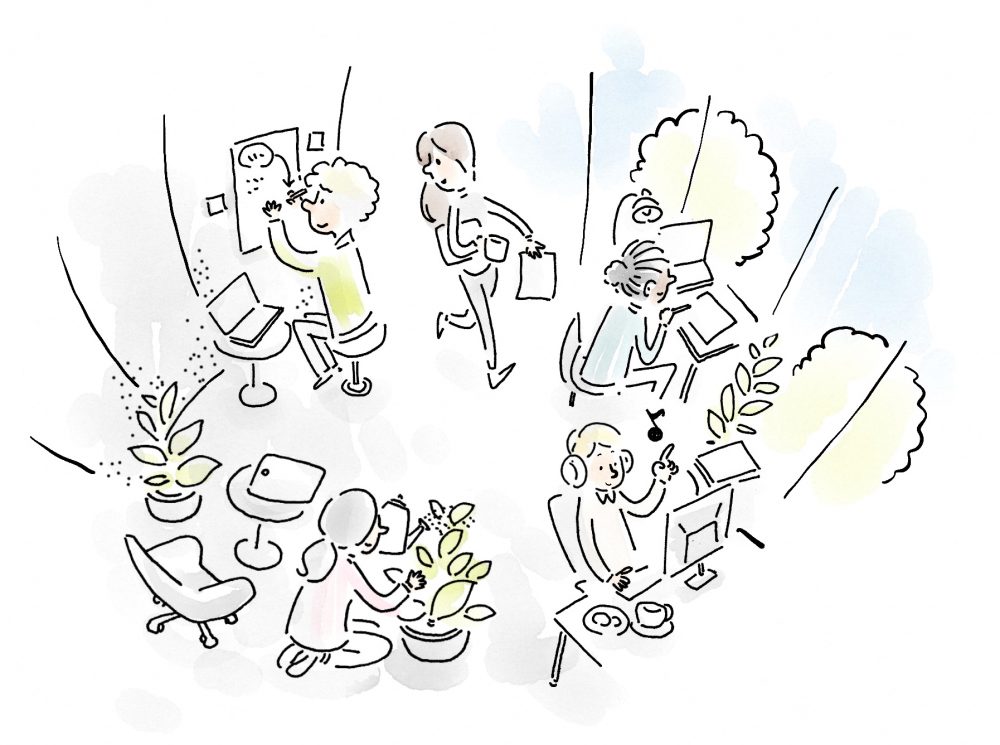The Perkins Eastman Design Strategy team reimagines what it means to “play” at work.
Play. Humans are innately drawn to it. And science tells us that engaging in play has a range of cognitive, social, physical, and emotional benefits. In the late 1990s and early 2000s, Google, Pixar, and myriad others began to leverage play-based design to boost innovation. The office-as-playground trend, marked by whimsical features like indoor slides, themed meeting rooms, and candy-colored hammocks suspended from the ceiling, became the calling card of Silicon Valley start-up culture and tech companies.
As their workers, and these companies grew up, however, this type of playful design became associated with gimmicks and manipulative tactics … efforts to keep employees at work so that their lives revolve around the office.
There is lots of data that supports that working together—in person—benefits individuals, relationships, and team performance. And play, with its documented positive effects on mental and physical well-being, can be a vital component of a thriving, creative, and engaged office culture.
Play Theory
The argument for play is solidly supported by neuroscience research. We now understand that play is a precursor to learning, creative thinking, motivation, and other positive outcomes and states. It is also linked to improved problem-solving skills, increased social cohesion, and neurogenesis—the growth and development of nervous tissue in the brain—even in adults!
But a playful office doesn’t have to look like a playground.
There are subtle but effective ways to set a lighthearted tone and encourage creative engagement at work.
Our design team used play-based strategies for the flagship office of TD Securities in Manhattan. Multi-sensory elements, from textures and pops of color to cutting-edge and hands-on tools and amenities, enliven the space and encourage engagement. The office features diverse space types and furnishings to invite playful engagement, promote collaboration, and support the company’s culture of innovation.
The Pursuit of (Workplace) Fun
In academic literature, workplace fun is defined as playful activities that are amusing, pleasurable, or enjoyable. These activities can be social, interpersonal, recreational, or task-based, but they all share a common thread: play.
Workplace fun benefits employees’ health and well-being, increases engagement, promotes collaboration, and fosters creativity.
Three Ways to Leverage Play in Office Design

1. Play, Your Way
Fun for one isn’t (necessarily) fun for all. Rene Proyer, professor of psychology and play researcher, identifies four dimensions of playfulness: Other-directed, Light-hearted, Intellectual, and Whimsical. Other-directed play is social in nature, while Light-hearted play refers to “seeing life as a game.” Intellectual play involves a mental challenge. Quirky or off-the-wall humor points to Whimsical play.
Use the four dimensions of playfulness to inspire different kinds of play in the office. For example, a game room might invite Other-directed and Light-hearted play, while a display of quirky memorabilia or tongue-in-cheek signage might encourage Whimsical play.

2. Beware of “Fake Fun”
Catherine Price, science journalist and author of The Power of Fun: How to Feel Alive Again, makes a distinction between “fake fun” and “true fun.” True fun, she says, happens at the intersection of playfulness, connection, and flow. Fake fun, on the other hand, uses up leisure time but is generally passive and unfulfilling.
In the office, carve out spaces for activities that blend playfulness, connection, and flow. Play can happen alone, but more often than not there is an important social component. Prioritize playful, low-stakes activities that bring people together and are just challenging enough to excite and engage.

3. Don’t Force It
Organized play can feel like a drag when employees are overworked, when team bonds are lacking, or when a culture of learning and growth is not supported from the top. It’s essential to let employees call the shots when it comes to office fun, especially when it encroaches on their work or leisure time.
The best kind of play is intrinsically motivated. To encourage play without driving people up the wall, make sure employees know they can opt out if they choose. Recruit team members to come up with activities that embody their own idea of fun and provide resources (including time!) to plan and implement them.


